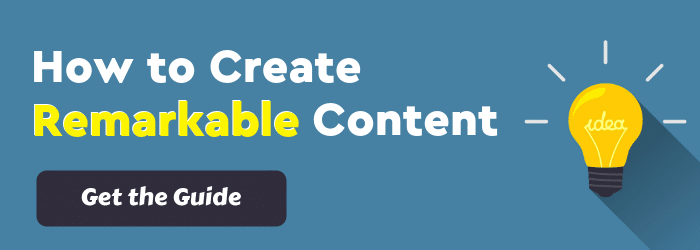
A content marketing plan can be daunting to put together. It is a lot of work, involves hours of research, takes input (at least it should) from various areas of your organization, and requires some deep thinking. Sometimes I have trouble diving into a content marketing plan, and I do lots of them, so it’s no wonder that less than half of B2B content marketers (only 44 percent) actually have a documented content strategy, according to the Content Marketing Institute’s study, “B2B Content Marketing 2014 Benchmarks, Budgets, and Trends — North America.”
A few months ago, Mike Sweeney gave you the basics on how to create an effective content marketing plan, and hopefully you launched right into that process. No? OK, well, there is no time like the present. Mike dissected the parts of a plan for you, so you know that you have some up-front work to do on goals and objectives, research, benchmarking, and other important areas. But today, I’m going to talk you through a section that, personally, I think is the most fun: ideas, messages and themes. This is the creative part of the plan, where you get to drill into interesting things you are going to talk about all year.
A year is a long time, so even if you don’t or can’t build out an editorial calendar to last 365 days, you can create a solid groundwork for your ideas, messages and themes that will give you something to go back to when the well runs dry and you can’t remember what you were supposed to base things on. Here’s how to work out the ideas, messages and themes for your plan (and some descriptions to understand the differences between them).
Think of your big idea
Think of your idea this way — as the BIG idea — and you won’t get it confused with the themes or messages. In Mike’s post, he referred to ideas also as campaigns or programs, and that works, too.
The goals and objectives of the company (and marketing area) should factor into your idea(s). So, if your company is XYZ Attorneys at Law, and a goal for the year is to raise the visibility and approachability of the attorneys in the firm, you might generate a couple of ideas relating to that goal. One might be a “Meet the Attorneys” idea that focuses on specific, individual attorneys, and the other might be softer, like an “Understanding the Law” feature, which presents this educational content via the firm’s attorneys. In doing this, your two ideas match up directly with the company’s visibility and approachability objectives.
Know your messages
Every company should have a messaging guide, whether you have a documented content strategy or not. But if you’re going to put a content marketing plan together, you absolutely need to have your company’s messaging — its story — down. That messaging will inform your themes for the year, from which you then create your content. Remember, your content overall has to work like a story within a story. So, while we will always tell you that a good piece of content tells a story, we aren’t advocating that you tell your whole company story in every piece of content. Tell a story in each piece of content. Weave your messaging — your company story — into your content in measured amounts depending on the content type and audience. Think about that as you create your plan. Put your messages into your plan succinctly so that you can refer to them as you weave them into your content and sprout your themes. XYZ Attorneys at Law might have messages in its content plan that looks like this:
- XYZ is specialized — XYZ Attorneys at Law focuses exclusively on tax law and nothing else.
- Knowledge and experience — XYZ’s 42 attorneys have an average of 20 years’ experience each in the field, and frequently speak all over the country on their various subjects of specialization.
- Senior-level attention — Unlike many firms of the same size, at XYZ, each client receives senior-level attention. Our attorneys know our clients personally.
Grow a theme tree
Think of your content themes as a tree. Your big ideas are way down in the ground under the roots. Your company messaging is layered right on top of that at the root level, and then your content themes grow right out of that mixture. The tree trunk is a big stack of anchor content that you can use as calls to action for lead generation. Your branches are themes that sprout from each message and relate to your big idea. So, going back to our XYZ Attorneys at Law example, it might have “theme branches” for just the “knowledge and experience” message that include topics like this:
- News/industry information
- Tax law trends affecting small- and medium-sized businesses
- Best practices for your business
Each branch, such as news/industry information, would have lots of smaller branches shooting from it that can represent the pieces of content. XYZ can probably create 10 blog posts in a year about hot tax litigation news, I’m sure. Each of those posts can be written by one of XYZ’s attorneys, and to reinforce the goal of personalizing the staff, XYZ could create a personal video of each attorney on the website and link to it from whatever they write. More spindly little branches that extend from the larger news/information branch could represent curated content on similar subjects.
While ideas, messages and themes are the most creative part of your content marketing plan, they require just as much planning as the other areas. Do get creative, but use the “tree logic” referenced above to create a structure that supports your overall marketing and business objectives.
Are you struggling to get your content marketing program off the ground? Oftentimes, the plan (or lack thereof) is the problem. Let us help you out.




